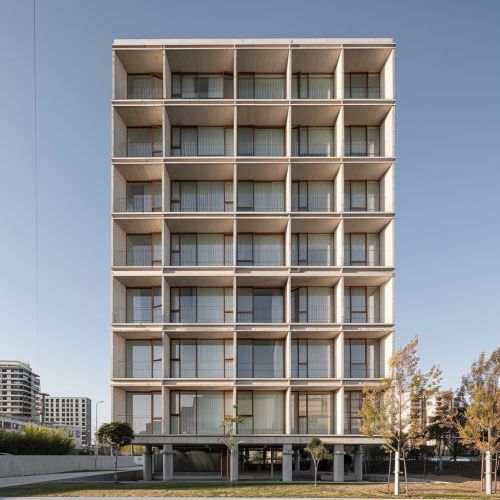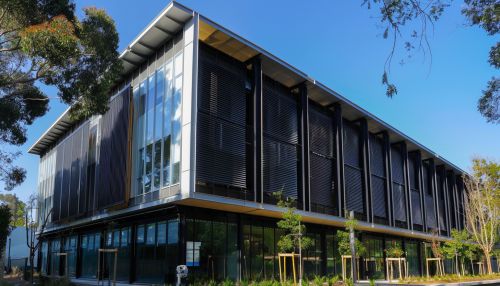Structural Dynamics
Introduction
Structural dynamics is a sub-discipline of structural engineering that focuses on the analysis of structures subjected to dynamic loading. This field is crucial for understanding how structures respond to various types of loads that change with time, such as wind, earthquakes, traffic, and machinery vibrations. The study of structural dynamics is essential for ensuring the safety, reliability, and longevity of structures, particularly in regions prone to natural disasters.
Fundamental Concepts
Dynamic Loadings
Dynamic loadings refer to forces that vary with time, as opposed to static loads, which remain constant. These loadings can be periodic, transient, or random. Periodic loads, such as those from rotating machinery, have a regular repeating pattern. Transient loads, like those from an earthquake, are short-lived but can be very intense. Random loads, such as wind gusts, have no predictable pattern.
Degrees of Freedom
In structural dynamics, the concept of degrees of freedom (DOF) is fundamental. A degree of freedom represents an independent mode of motion. For instance, a simple beam can have multiple DOFs, including translational and rotational movements. The number of DOFs in a structure determines the complexity of its dynamic analysis.
Natural Frequencies and Mode Shapes
Every structure has its own set of natural frequencies and corresponding mode shapes. Natural frequencies are the frequencies at which a structure tends to vibrate when disturbed. Mode shapes describe the deformation patterns of the structure at these frequencies. Understanding these properties is crucial for predicting how a structure will respond to dynamic loads.
Mathematical Modeling
Equations of Motion
The behavior of structures under dynamic loads is governed by the equations of motion, which are derived from Newton's second law of motion. For a single-degree-of-freedom (SDOF) system, the equation of motion can be expressed as:
\[ m\ddot{x}(t) + c\dot{x}(t) + kx(t) = F(t) \]
where \( m \) is the mass, \( c \) is the damping coefficient, \( k \) is the stiffness, \( x(t) \) is the displacement, and \( F(t) \) is the external force.
Damping
Damping is a critical factor in structural dynamics, representing the energy dissipation mechanisms within a structure. Common types of damping include viscous damping, where the damping force is proportional to velocity, and hysteretic damping, which is related to the material properties of the structure.
Numerical Methods
Analytical solutions to the equations of motion are often impractical for complex structures. Therefore, numerical methods such as the finite element method (FEM) and the Newmark-beta method are employed. These methods discretize the structure into smaller elements and solve the equations of motion iteratively.
Applications
Earthquake Engineering
One of the most critical applications of structural dynamics is in earthquake engineering. Structures in seismically active regions must be designed to withstand the dynamic forces generated by earthquakes. This involves performing seismic analysis to predict the response of structures and implementing base isolation techniques to mitigate the impact.


Wind Engineering
Wind engineering is another important application area. Structures such as skyscrapers, bridges, and towers are subjected to dynamic wind loads. Wind tunnel testing and computational fluid dynamics (CFD) simulations are commonly used to study the aerodynamic behavior of these structures.
Vibration Control
Vibration control is essential for structures housing sensitive equipment or machinery. Techniques such as tuned mass dampers, active control systems, and passive damping devices are employed to reduce unwanted vibrations and ensure the smooth operation of equipment.
Advanced Topics
Nonlinear Dynamics
Nonlinear dynamics deals with systems where the relationship between forces and displacements is not linear. This can occur due to material nonlinearity, geometric nonlinearity, or boundary condition nonlinearity. Nonlinear dynamic analysis is more complex and often requires advanced computational techniques.
Stochastic Dynamics
Stochastic dynamics involves the study of structures subjected to random or probabilistic loads. This field is particularly relevant for structures exposed to environmental loads such as wind and waves. Probabilistic methods and Monte Carlo simulations are commonly used to assess the reliability and performance of structures under stochastic loads.
Multi-Degree-of-Freedom Systems
While SDOF systems provide valuable insights, real-world structures are often modeled as multi-degree-of-freedom (MDOF) systems. MDOF systems account for the interaction between different parts of the structure, leading to a more accurate representation of its dynamic behavior.
Experimental Methods
Modal Testing
Modal testing is an experimental technique used to determine the natural frequencies, mode shapes, and damping ratios of a structure. This involves exciting the structure using a known input force and measuring its response. The data collected is then analyzed to extract the modal parameters.
Shaker Tests
Shaker tests involve using a mechanical shaker to apply controlled dynamic loads to a structure. These tests are commonly used in the aerospace and automotive industries to evaluate the dynamic performance of components and assemblies.
Full-Scale Testing
Full-scale testing involves subjecting an entire structure to dynamic loads to assess its performance. This is often done for critical infrastructure such as bridges and buildings. Full-scale tests provide valuable data for validating numerical models and improving design practices.
Future Directions
Smart Structures
The development of smart structures, which can adapt to changing environmental conditions, is an emerging area in structural dynamics. These structures incorporate sensors, actuators, and control systems to monitor and respond to dynamic loads in real-time.
Advanced Materials
The use of advanced materials such as shape memory alloys, carbon fiber reinforced polymers, and nanomaterials is revolutionizing the field of structural dynamics. These materials offer superior strength, flexibility, and damping properties, enabling the design of more resilient structures.
Computational Advances
Advances in computational power and algorithms are enabling more accurate and efficient dynamic analyses. Techniques such as machine learning and artificial intelligence are being integrated into structural dynamics to predict and optimize the performance of structures under dynamic loads.
